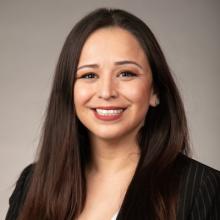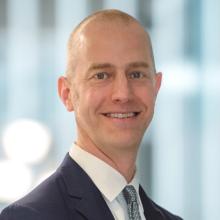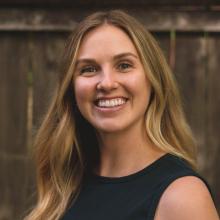RemPlex Seminar: The Hidden Costs of PFAS Remediation
Learn how factors such as energy use, waste generation, and regulatory context affect the long-term sustainability of PFAS cleanup efforts in this discussion co-hosted by RemPlex and the Sustainable Remediation Forum (SURF).
The Hidden Costs of PFAS Remediation: Energy, Waste, and Long-Term Viability
Tuesday, August 19, 2025
Recording
Presentation Slides (PDF)
Seminar Abstract

This seminar, hosted by the Center for the Remediation of Complex Sites (RemPlex) and the Sustainable Remediation Forum (SURF), will explore the environmental footprint of treating per- and polyfluoroalkyl substances (PFAS) contamination.
PFAS management presents many challenges, from uncertainties about human health risks and contaminant behavior to the effectiveness of treatment technologies and the demands of evolving regulatory frameworks. As practitioners, regulators, and stakeholders work through these complexities, it is essential to consider the environmental footprint of selected remedies.
Presenters will discuss the energy demands, waste generation, and broader environmental impacts of PFAS treatment technologies, offering insights into how these factors—alongside the regulatory context—should shape decision-making around remediation.
Attendees will gain insights into the following topics:
The energy demands and waste generation associated with current PFAS cleanup technologies.
- Methodologies for calculating the environmental footprint of remediation strategies.
- How treatment technology selection is influenced by both environmental impact and regulatory context.
- Emerging perspectives on remedy sustainability and life cycle implications for PFAS remediation.
The topics addressed in this seminar will be further explored during the upcoming 2025 Global Summit on Environmental Remediation, which includes sessions on PFAS Progress: Evolving Science, Policy, and Solutions and Rethinking Remediation from Sustainability and Circularity Perspectives. The summit will be held in Richland, Washington (USA), November 4–6, 2025, with a virtual participation option. Register here to join us at the summit.
Presenters

- Emerald Laija, Deputy Director of the Federal Facilities Restoration and Reuse Office, Environmental Protection Agency: PFAS Regulatory Overview
This presentation will provide an overview of current regulations addressing remediation of PFAS under the Comprehensive Environmental Response, Compensation, and Liability Act (CERCLA). Helpful resources will also be provided.

- Jeff Bamer, Environmental Engineer and Discipline Leader of Remedial Design, CDM Smith: Options and Considerations for Selecting Remediation Technologies for PFAS in Soil and Water.
Development of a feasible and optimized PFAS remediation strategy requires consideration of candidate treatment technologies’ demonstrated effectiveness, technology readiness level, energy usage, and applicability, given site parameters. For destructive technologies, it is critical to concentrate the incoming waste stream given the high energy requirements. This talk will focus on considerations for selecting PFAS treatment technologies for water and soils, including those associated with sustainability and efficiency.

- Paige Molzahn, Executive Advisor, Jacobs, and President, SURF Board of Trustees: Assessing the Environmental Footprint of PFAS.
The low cleanup levels likely to be promulgated for PFAS will require long-term/extensive treatment operations, making the consideration of the environmental footprint vital. Understanding these impacts for both solid and liquid PFAS treatment technologies can provide additional information to be considered during the remedy selection process. This talk will present the methodology used for data gathering, the process used for the environmental footprint calculation, the results from the evaluation, and the opportunities and considerations for the future of PFAS treatment technologies.
Facilitators
- Evan Starr, U.S. Department of Transportation Volpe Center and At-Large Member, SURF Board of Trustees
- Christian Johnson, Senior Development Engineer and RemPlex Advisor, Pacific Northwest National Laboratory